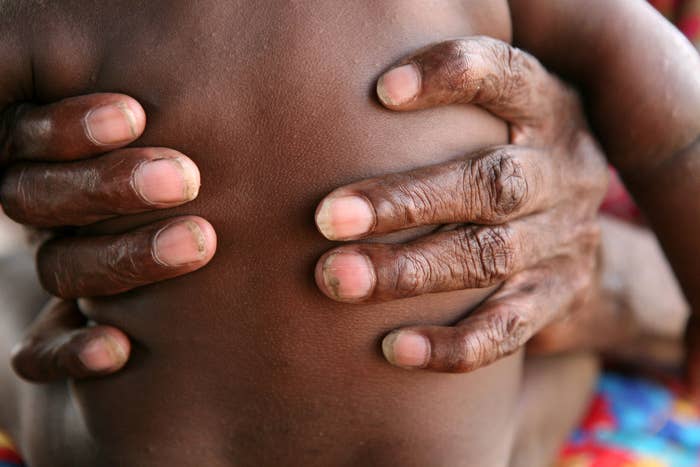Aboriginal parents in NSW feel powerless in interactions with the child protection system, despite having similar views to non-Aboriginal parents and service workers about what constitutes ‘‘neglect’’, a new study has found.

It was “the difficult circumstances experienced by Aboriginal families that keep parents from actualising their parenting expectations,” the study reports.
The study (subscription required) was conducted by Wiradjuri woman BJ Newton, a research associate at the University of NSW’s Social Policy Research Centre. It is the first project in Australia that specifically looks at how Aboriginal parents define and perceive child neglect.
“Aboriginal children are removed at alarming rates from their families, and yet we really don’t know anything about how Aboriginal families view or experience the policies that impact on them,” Newton told BuzzFeed News.
The research was based on 18 interviews with Aboriginal parents and nine interviews with non-Aboriginal and Aboriginal workers in one unidentified rural NSW town.
The town is 25% Aboriginal, and has a high degree of disadvantage, with no public transport, and limited access to health, drug and alcohol, domestic violence and mental health services.
The families interviewed all had contact with child protection agencies, whether it was having their children removed, or being removed as children themselves.
Newton found that the Aboriginal parents she spoke to viewed neglect in much the same way as non-Aboriginal people and child protection workers.
“I wasn’t necessarily expecting Aboriginal families to align so strongly with workers or mainstream kind of views [on neglect], [but this is] reflective of international literature," Newton said.
“In the US, there are studies that looked at perspectives of African American women, or Native American women and Hispanic women, that saw similar or stricter
views of what was acceptable or unacceptable parenting.”
The rate at which Aboriginal and Torres Strait Islander children are being removed has increased since former prime minister Kevin Rudd promised it “must never happen again” in his Apology to the Stolen Generations in 2008.
Nationally, First Nations children are removed at rates of more than nine times non-Indigenous children. There are over 15,000 Indigenous children in out-of-home care.
In NSW First Nations children are more than eight times as likely to be subject to substantiated child protection reports than non-Indigenous kids. Thirty-nine per cent of these reports are claimed to be cases of neglect.
Under forced removal policies spanning decades, Aboriginal children have been removed from their families and communities, with "neglect" often cited as the reason. This gave rise to the Stolen Generations.
“There is a widely-held believe that the care of Aboriginal children is scrutinised by the child protection system, because non-Aboriginal workers, who comprise the bulk of caseworkers, are not aware of Aboriginal parenting norms, and are mistaking cultural family practices for child neglect,” Newton says in the study.
There is evidence that cultural misunderstanding is a contributor to the high rates of child removal in Aboriginal communities.
But Newton says there was an all-consuming sense of powerlessness, stemming from historic and current oppression that affected the families’ ability to parent in a way they themselves deemed acceptable.
“There was a huge issue around historical trauma that was present in the community, and not just at a family level, and not just in terms of inter-generational trauma, but in terms of this collective community feeling of trauma that would manifest itself through lateral violence and an overwhelming sense of powerlessness,” Newton said.
“This was huge — families, and workers, felt powerless to change the situation
on their own. Everyone was at a loss of what to do.”
That didn’t mean that there wasn’t a resilience and strength in the community,
particularly amongst Aboriginal mothers, and Newton says families were “trying
very hard to break the cycle”.
But they often lacked support needed to do this, and faced further barriers that compounded this sense of powerlessness.
“A good example was where there was a mum with a young family," Newtown said. "They had the choice — they could either be homeless, or they could be moved to a place in town, but the public housing was only available in the middle of a drug-fuelled area.
"The mother and father had had a lot of problems with [substance abuse] in the past, and they were trying to overcome that.
“The mother was very angry with the Department of Housing for placing her in that local area when she was trying to get her older children back. She knew there was no way she would have a chance of getting them back if she was placed there. So she felt powerless.”
Newton says the perspectives of Aboriginal parents need to be included in order to reduce the high rates of Aboriginal child removal.
“We have been applying Western ways to Indigenous communities for 200 years and it hasn’t worked.”
